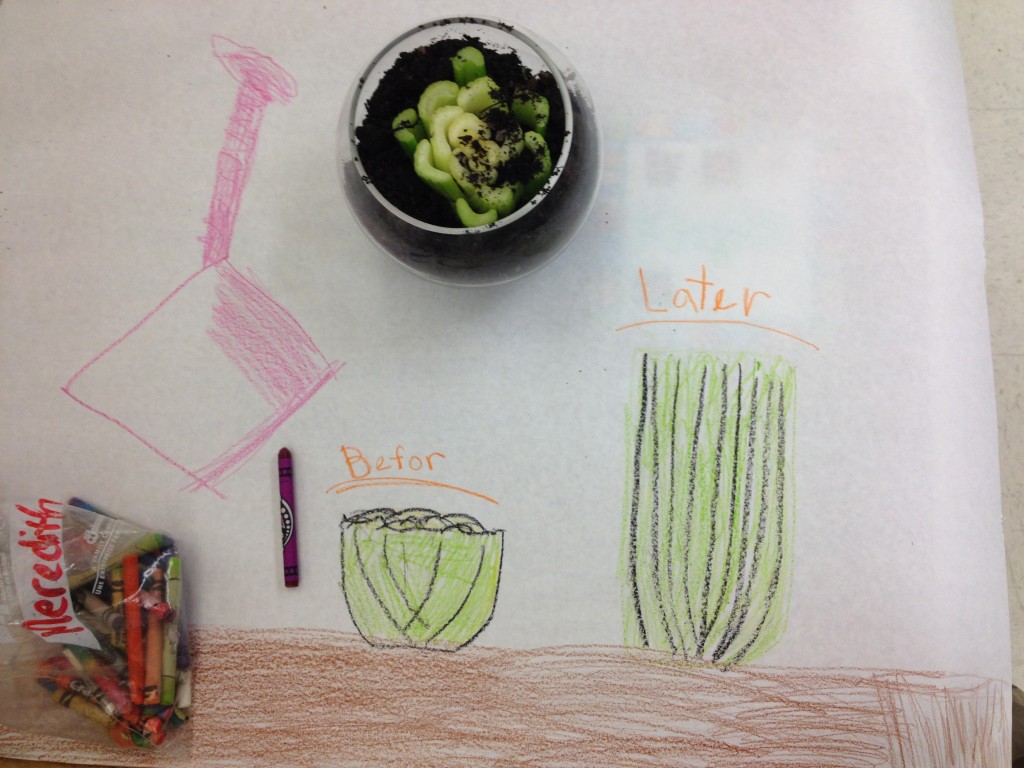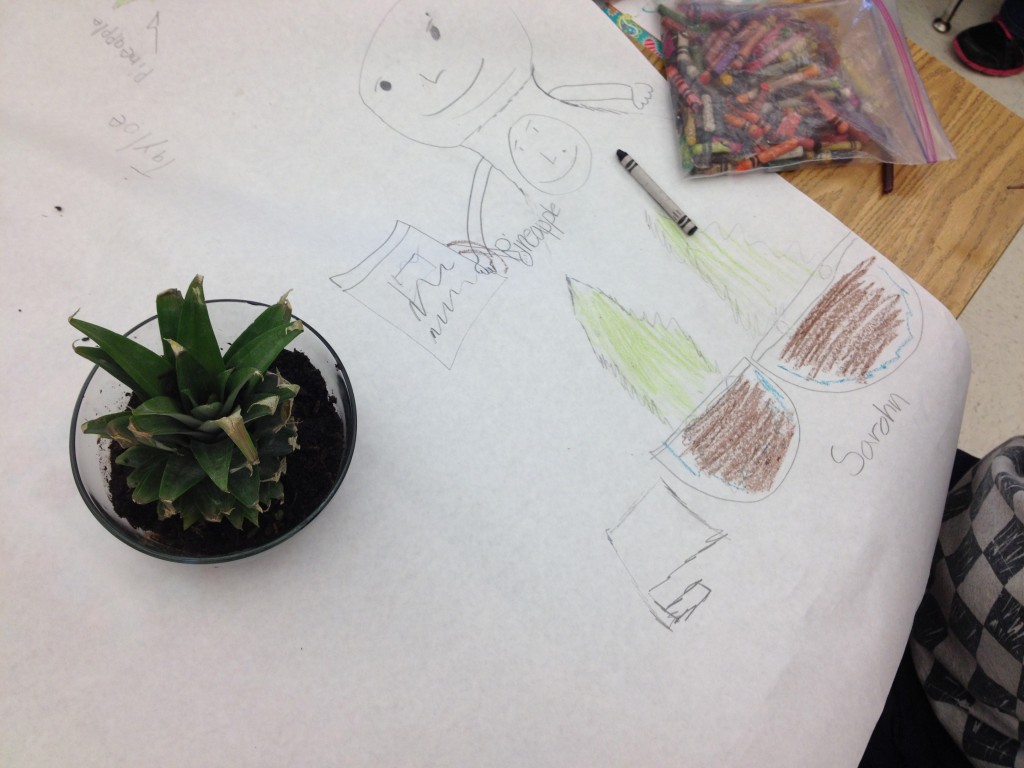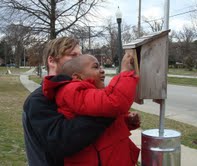How One School Garden is Making A Difference in Richmond
by Jonah Holland, PR & Marketing Coordinator, Lewis Ginter Botanical Garden
When I met with Ellen Shepard, the woman behind the intricate gardens and orchard at Linwood Holton Elementary School, I never expected to end up talking about zombies, But that’s exactly how it happened. Zombie plants that is.
I’d never heard of them, but you can be sure if there is a trend in school gardening, Shepard’s heard of it — and tried it with the kids at Holton. So what exactly is zombie gardening? Bringing plants to life from the “dead.” I think you throw in the word zombie, and the kids get excited just by the idea of it! OK, so maybe I have heard of this. We used to grow avocados from avocado seeds when I was a kid! In this case, the kids at Holton are taking a celery bottom that’s been cut off so the stalks could be eaten, and they’ll plant it to see if it grows. They’ll try the same thing with any other plant discards — green onion, pineapples, carrot tops. Not all of them have to be successful Shepard explains, just enough of them so that the kids can learn about what it is that might or might not make a scrap of a plant successful in “coming back to life.” It’s all part of an experiment to engage the kids in learning about nature, where there food comes from, how it grows and the environment. The idea came from one of the teachers, Mrs. Hooker.
I’ve admired the gardens and orchard at Holton Elementary School, called The Dandelion (Holton’s mascot is the lion), for a long, long time. But until I visited with Shepard, I never knew that there was a deep connection between their garden and ours. Although they’d talked about making an outdoor learning classroom for kids before, Shepard says it wasn’t until 2009, when several of their teachers attended a symposium here at the Garden, No Child Left Inside: Restoring Nature to Early Childhood, that they teachers and the parents felt really motivated to make it happen. “We’ve tried to do training, but they are just not as inspirational. You [Lewis Ginter Botanical Garden] has these amazing speakers who are able to inspire our teachers, and that happened at No Child Left Inside.”
So how Shepard manage to raise Red Ace beets, broccoli, broccoli raab, several types of carrots, chard, chicory/endive, collards, kale, Romaine lettuce, wildlife lettuce mix, Easter egg radishes, deep purple scallions, spinach, 3 kinds of peas, cilantro, potatoes, and nasturtium, an orchard, and hundreds of kids working in the outdoor classroom? Twenty-eight out of 30 classes want to go out and plant. She and another mom, Susanna Raffenot, facilitate that happening, plus they are always looking for volunteers to help.The Dandelion includes 24 raised garden beds. The gardens encourages wildlife habitat and pollinators through the more than 200 primarily native trees students have planted. Plus, there’s a bluebird trail; and a butterfly garden, which is in the shape of a butterfly and has plants that attract butterflies. Water conservation features include a shed with a live roof, six rain barrels, and a small rain garden with a large one in the works. The Dandelion includes 24 raised garden beds. The gardens encourages wildlife habitat and pollinators through the more than 200 primarily native trees students have planted. Plus, there’s a bluebird trail; and a butterfly garden, which is in the shape of a butterfly and has plants that attract butterflies. Water conservation features include a shed with a live roof, six rain barrels, and a small rain garden with a large one in the works.
Holton received over $75,000 in contributions and in-kind donations including from principal David Hudson’s R.E.B. award for Distinguished Leadership, Bon Secours, Holton PTA, local parents, community members and businesses. In-kind contributions included the roof on the outdoor classroom, live roof on the shed, site grading, stone dust for the classroom, irrigation, bricks, and plants. Raffenot says, “The gardens would not be where they are without husband/wife team (and former Holton parents) Mary Lorino and Chris Chase. They did all the design work, engineering, and construction lead, coordinating and acquiring the materials. They were awarded a Golden Hammer for Best Neighborhood Design by the Better Housing Coalition. They provided maps and a 3-D model to help us visualize and promote our dream; and spent a lot of time with City of Richmond getting the plans approved.”
Ongoing parent support has helped keep the gardens green and planted.
“This year we were contacted by the Chesapeake Bay Foundation that installed the first rain garden and will install a much larger one this June.” HandsOnRVA coordinated two garden work days and projects this year including a human sun clock; and the Virginia Bluebird Society that installed the bluebird trail.
And look who’s inspiring who! Each time I walk by the Holton gardens, I’m inspired to do more with my own vegetable garden at home, and in teaching my children more about where their food comes from. Meanwhile, the zombie vegetable trend continues on Pinterest and elsewhere. Want to learn more about “zombie gardening” try the Huffington Post or these helpful hints from Frugal Living. Just don’t search for “zombie plants” on Pinterest!


